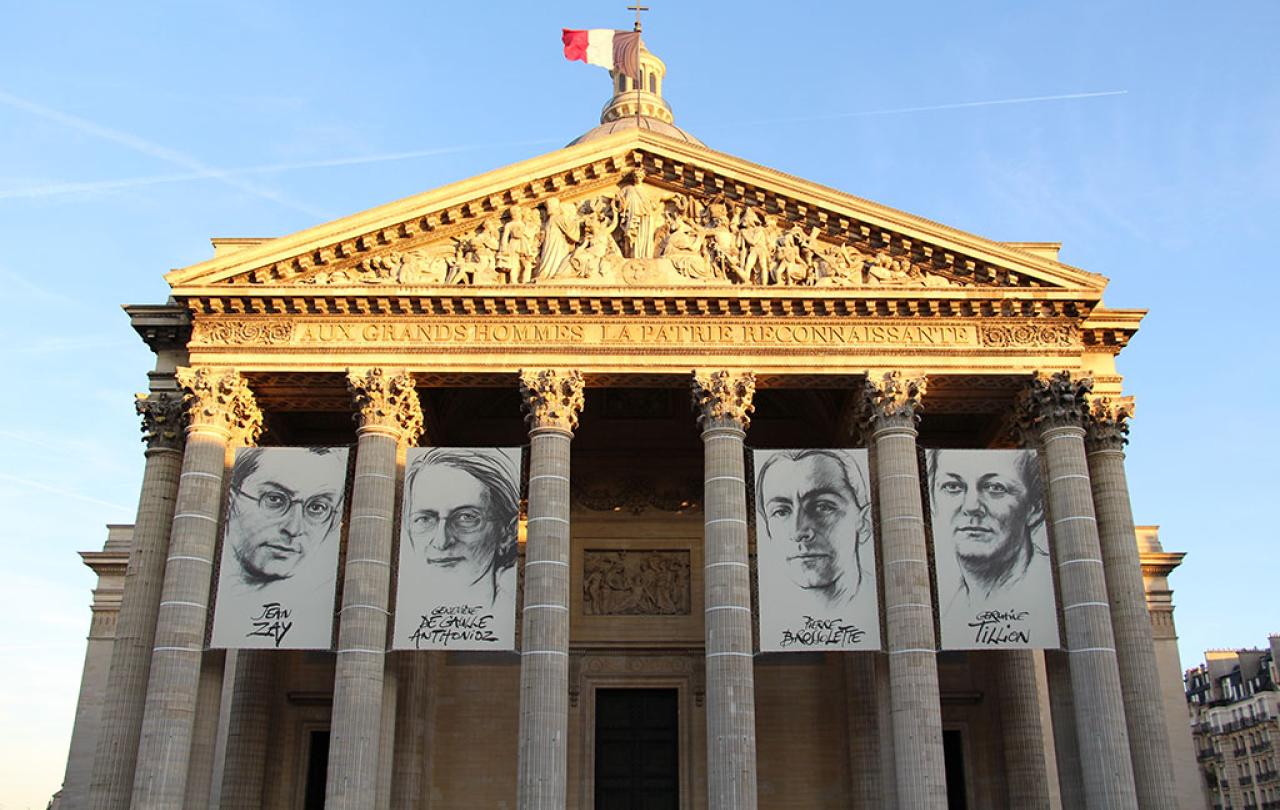
We’re nearly at the end of the first week of January, as I am writing this, and the festivities of Christmas feel like a distant memory already. Although the traditional Twelve Days of Christmas run from Christmas Day until 5 January, by now we have probably put our Christmas jumpers back in the wardrobe and returned to the usual routine. But while sparkling decorations may already have been consigned to the cupboard until next Christmas, it is in these early days of the new year when Christians traditionally celebrate three of the most memorable characters of the Christmas story: the Magi, also known as the Three Kings or the Three Wise Men.
We associate the Magi with children’s nativity plays in the joyful days of December, and with gifts of gold, frankincense, and myrrh that look very much like they were cardboard boxes before they were covered with gold paint and sprinkled with glitter. But celebration of the Magi and their presentation of gifts to the newborn Jesus is actually commemorated on 6th January, the feast of Epiphany, when the light of God’s revelation breaks through the dreary January days.
The Magi were interpreted as symbols of the Three Ages of Man (youth, middle age, and old age) and, before the discovery of the Americas, of the three known continents (Africa, Asia, and Europe).
Epiphany
In the Bible, Matthew says that news of Jesus’s birth was revealed to wise men in the East, who interpreted the appearance of a star as a symbol that the King of the Jews had been born. They travelled to Jerusalem in search of the newborn King, where they encountered Herod, the King of Judea, who was (perhaps not surprisingly) concerned to learn of the birth of an apparent rival to the throne. Herod sent the wise men on to Bethlehem, with instructions to inform him when they found the newborn King, so that he could also go and worship him. We later discover, of course, that Herod’s real intention had been to find Jesus and kill him, in an attempt to remove the threat to his own power. As the wise men proceeded to Bethlehem, the star they had seen went ahead of them and rested over the birthplace of Jesus. There they discovered the newborn Jesus, with his mother, Mary, and they worshipped him, presenting him with gifts of gold, frankincense, and myrrh. Warned in a dream not to return to Herod, the wise men left Bethlehem and returned home.
Matthew doesn’t specify how many wise men visited Jesus, but Christian tradition has settled on three, corresponding to the number of their gifts. We are probably very familiar with these gifts of gold, frankincense, and myrrh from nativity plays and thousands of Christmas cards. But we may be less familiar with their traditional symbolism in relation to Jesus: gold for his kingship, frankincense for his divinity, and myrrh to foreshadow his sacrificial death. Stories about the Magi also developed in later literature, and the wise men were given the names of Caspar, Balthasar, and Melchior. The Magi were interpreted as symbols of the Three Ages of Man (youth, middle age, and old age) and, before the discovery of the Americas, of the three known continents (Africa, Asia, and Europe).
The Washington Adoration of the Magi is not a serene depiction of the biblical kings’ devotion, but the exuberant splendour of a busy Renaissance court.
We are familiar with representations of Epiphany from paintings such as the Adoration of the Magi in the National Gallery of Art in Washington, D.C., which was painted in Renaissance Florence around the middle of the fifteenth century. It was probably painted by Fra Angelico (c.1395–1455) and Fra Filippo Lippi (c.1406–1469), two of the most important Florentine artists of this period, who were also friars in the convents of San Marco and Santa Maria del Carmine respectively. The circular painting, or tondo, represents the Virgin Mary seated in a rocky but verdant landscape, tenderly supporting the Christ Child on her lap, with Joseph standing at her side. Behind them, a bulky ox lies in front of the stable where Christ was born and an ass eats hay from the manger where we presume Christ was laid. Kneeling among the delicately painted flowers in the foreground are the three Magi and their attendants, presenting their gifts to Christ in adoration. Sumptuously dressed in robes of blue, bright red, and pale lilac, decorated with gold, the Magi wear costumes that would have been understood in fifteenth-century Florence to allude to the exoticism of the East.
But the Magi are not the only ones who have come to worship Christ in this painting. Behind them, crowds of people stream downhill through an archway, many of them holding out their hands in gestures of awe and reverence. Some of them look upwards towards the star that was said to have rested over the birthplace of Christ. The Washington Adoration of the Magi is not a serene depiction of the biblical kings’ devotion, but the exuberant splendour of a busy Renaissance court or, in the case of fifteenth-century Florence, a bustling mercantile republic.
Florentine citizens would perform as the Magi and their retinue, processing across the city in elaborate costumes, a rare opportunity to diverge from the strict regulations... that dictated who could wear what in everyday life.
The Magi and the Medici in Renaissance Florence
Epiphany was a hugely significant celebration in fifteenth-century Florence. This was partly because the feast of the Magi on 6th January coincided with another religious celebration, the Baptism of Christ by St John the Baptist, who was Florence’s patron saint. But Renaissance Florence was also a prosperous centre of banking and trade, and the manufacture of luxury goods, and it was populated by wealthy and powerful men who sought to articulate religious devotion through association with the Magi. The Washington Adoration was probably in the collection of the powerful Medici family, who established their position in Florence through banking. They were prominent devotees of the Magi, and they were enormously influential, not least through their cultural patronage.
Cosimo de’ Medici (1389–1464) spent vast amounts of money on artistic and architectural projects in Florence. He sponsored the renovation of San Marco during the 1430s and 1440s, commissioning Fra Angelico to paint frescoes throughout the Dominican convent where he was based. Cosimo even had his own personal cell in San Marco, which was painted with an Adoration of the Magi, perhaps by a young Benozzo Gozzoli (c.1421–1497), who was then an assistant to Fra Angelico. San Marco was dedicated, as we might expect, to St Mark, and also to the early Christian martyrs Cosmas and Damian, who were patron saints of Cosimo de’ Medici. But the newly renovated building was ceremonially dedicated not on the feast of St Mark, but on the feast of the Magi, on 6 January 1443.
The Confraternity of the Magi
San Marco was the centre of devotion to the Magi in Renaissance Florence. The confraternity of the Magi, which met at San Marco, was a lay religious group whose members included the Medici family. Confraternities would meet regularly for worship and prayer, and would often perform charitable works. Their membership transcended some of the traditional divides of Renaissance Florence, with artisans and tradesmen meeting together alongside bankers, doctors, and lawyers.
One of the most important activities of the confraternity of the Magi was the organisation of festive processions in honour of the Magi on Epiphany. Florentine citizens would perform as the Magi and their retinue, processing across the city in elaborate costumes, a rare opportunity to diverge from the strict regulations known as sumptuary laws that dictated who could wear what in everyday life. The architectural fabric of Florence was also incorporated into the procession. Herod’s palace was represented by the Baptistery, opposite the Cathedral, or by the Palazzo della Signoria, the seat of Florentine government which was later known as the Palazzo Vecchio. The ceremonial route of the procession wound its way through Florence, past the Medici palace on the Via Larga (now Via Cavour), to its destination in “Bethlehem”, which was (of course) San Marco.
Epiphany was not the only time when Florentine citizens took part in processions honouring the Magi. They were also incorporated into the elaborate festivities associated with the feast of St John the Baptist, Florence’s patron saint, which lasted for several days in late June and often included extravagant processions. A Florentine chronicler, whose writings were published and discussed by the art historian Rab Hatfield, recounted the procession of the Magi during the feast of St John the Baptist in 1428, describing “eight horses, covered with silk, with eight pages dressed in silk and with pearls and heraldic ornaments and with shields, their faces angelic, riding one after the other with their livery. And after them, on a great and beautiful horse, came an old man with a white beard, dressed in a gold brocade of crimson and a peaked cap of crimson full of large pearls and with other ornaments of the greatest value, like a king such as those among the Christians.”
Similarly, celebration of the feast of the Magi on Epiphany also embraced broader aspects of Florentine civic devotion. The same chronicler who recounted the feast of St John the Baptist described a multitude of performative themes during the celebration of Epiphany in 1429: “And after lunch there were about seven hundred costumed men on horseback, among whom were the three Magi and their retinue, honourably dressed. And of the striking things they had with them, there were three giants and a wild man and, upon a car, a man impersonating David, who killed the giant with the sling.” It is hard not to read the description of this procession, with giants and a representation of David riding a festive float, and not imagine a scene like the Triumph of David by Pesellino (1422–1457), currently in the National Gallery’s exhibition devoted to this Florentine artist.
Given the traditional association of the Magi with the Three Ages of Man, it is no coincidence that Gozzoli portrayed three generations of the Medici family among the followers of the Magi.
The Journey and Adoration of the Magi
The broader visual and material culture of these festive processions informed how Florentine artists designed their paintings, and how contemporary viewers responded to them. There are many fifteenth-century Florentine paintings of the Adoration of the Magi in our galleries and museums. In the National Gallery in London, there are similar bustling scenes of devotion in Botticelli’s Adoration of the Kings (another tondo) of around 1470–1475 and an Adoration by Botticelli and Filippino Lippi (the son of Filippo) from the same period.
One of the most well-known paintings of the Magi from Renaissance Florence was painted on the walls of the Medici Palace chapel in 1459 by Benozzo Gozzoli, the same artist who probably painted the Adoration of the Magi in Cosimo’s personal cell at San Marco. Gozzoli’s frescoes in the Medici Palace chapel represent not the Adoration of the Magi, but the Journey of the Magi, with Caspar, Balthasar, and Melchior on horseback, winding their way towards Bethlehem through the landscape depicted on the walls of the chapel. The Magi are accompanied by a vast retinue of followers, which includes portraits of the Medici family and their allies, including Cosimo de’ Medici, his adult son, Piero (1416–1469), and his grandson, Lorenzo (1449–1492). Given the traditional association of the Magi with the Three Ages of Man, it is no coincidence that Gozzoli portrayed three generations of the Medici family among the followers of the Magi, tying the religious narrative to the contemporary realities of Florentine life.
The altarpiece in the Medici Palace chapel was painted by Filippo Lippi, who painted at least part of the Washington Adoration of the Magi. The original altarpiece is now in Berlin, and the painting currently displayed in the chapel is a fifteenth-century copy. It represents the Adoration of the Christ Child with the Infant St John the Baptist (Florence’s patron saint) and St Bernard of Clairvaux (the medieval saint to whom the chapel in the Palazzo della Signoria, the seat of Florentine government, was dedicated). Although the altarpiece had a definitive religious function, the inclusion of those two saints was also distinctly political. But the Magi are not shown in adoration before the Virgin and Child in Filippo Lippi’s altarpiece, nor does Gozzoli show them at their destination in his frescoes. We are left with their journey towards Christ. Perhaps the place of the Magi in adoration before the Virgin and Child was taken by the Medici family themselves during the performance of liturgy in the chapel.
When we look at the processions and sumptuous costumes of the Magi in these paintings, we may recall the descriptions of contemporary processions by Florentine chroniclers. When the original viewers of these paintings looked at them, they would probably have seen them through the lens of the religious festivities that they observed and participated in on their own streets. Many of the artists who painted the works we see today in our galleries and museums also designed the ephemeral decorations for Florentine civic processions, and the relationship between art and performance would probably have been reciprocal.
The feast of Epiphany was hugely important in fifteenth-century Florence. Delving into the history of its celebration sheds light on Renaissance paintings of the Magi, reminding us that the visual and material culture of religious imagery in this period expanded with exuberance beyond churches and palaces throughout the city’s streets. As we consider the significance of Epiphany in these cold, dark days of early January, we can remember the festivities that accompanied the feast of the Magi in Renaissance Florence, and the ways in which the paintings of the Magi that we see in our museums, galleries, churches, and chapels reflect a much broader visual and material culture of civic devotion.
Further reading:
Cristina Acidini Luchinat, The Chapel of the Magi: Benozzo Gozzoli’s Frescoes in the Palazzo Medici-Riccardi, Florence (London: Thames & Hudson, 1994)
Diane Cole Ahl, Benozzo Gozzoli (New Haven and London: Yale University Press, 1996)
Rab Hatfield, ‘The Compagnia de’ Magi’, Journal of the Warburg and Courtauld Institutes, vol.33, 1970, pp.107-161
Dale Kent, Cosimo de’ Medici and the Florentine Renaissance: The Patron’s Oeuvre (New Haven and London: Yale University Press, 2000)
Jeffrey Ruda, ‘The National Gallery Tondo of the “Adoration of the Magi” and the Early Style of Filippo Lippi’, Studies in the History of Art, vol.7, 1975, pp.6-39



